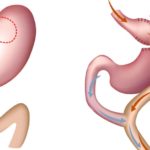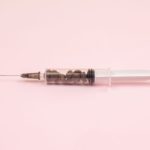What is a bipolar mood disorder?
The mood is a sustained feeling that is experienced internally and affects is the external expression of mood. Mood can be normal, elevated, or depressed. Healthy people experience a wide range of moods in life and usually, they are in control of their mood and affect. Mood disorders are characterized by loss of control over mood resulting in severe distress.
These mood disorders fall under two broad categories, mania, and depression. In mania, the mood is elevated resulting in increased activity whereas in depression the mood is low and is associated with a reduced level of activity. The disorders of mood are common and are described as bipolar disorders. In bipolar disorder, the mood of the person swings between mania and depression.
Features of bipolar mood disorder
Patients with elevated mood present with the following features:
- Expansiveness
- Flight of ideas
- Decreased sleep
- Grandiose ideas (false beliefs about one’s own high capabilities)
- Poor judgment
- Short temper
- Poor self-control leads to alcohol or drug abuse
- Impulsive behavior
- Excessive spending
Patients with depressed mood present with these features:
- Loss of energy and interest
- Feelings of guilt
- Difficulty in concentrating
- Loss of appetite
- Sadness
- Thoughts of death or suicide
- Poor decision making
- Loss of appetite and weight loss or excessive eating and weight gain
- Loss of interest in work and people around
- Loss of hope
- Feeling of worthlessness
Epidemiology of bipolar disorder
These disorders result in poor interpersonal, social, and occupational output.
Gender: There is an equal prevalence among men and women. Manic episodes are more common in men, and depressive episodes are more common in women.
Age: The mean age of onset for bipolar I disorder is 30 years, though it can occur from childhood to the fifth decade of life.
Marital status: Bipolar I disorder is more common in divorced than married persons.
Socioeconomic status: A higher than average incidence of bipolar I disorder is found among the upper socioeconomic class of people.
Types of bipolar mood disorder
Bipolar I disorder: This disorder is defined as having a clinical course of one or more manic episodes and, sometimes, major depressive episodes. A mixed episode is a period of at least 1 week in which both a manic episode and a major depressive episode occur almost daily. A manic episode is a persistently elevated or irritable mood, lasting for at least one week. Sometimes the patient may need hospitalization.
Bipolar I disorder most often starts with depression, more commonly in women than men. The majority of the patients suffer from depressive and manic episodes. About 10-20% of patients may have only manic episodes. The onset of manic episodes usually evolves over hours or days. An average manic episode may last for about 3 months. As the disorder progresses, the episodes become frequent.
Bipolar II disorder: It is a bipolar disorder characterized by episodes of major depression and hypomania. A hypomanic episode is a mild form of mania that is not associated with social or occupational functions and lasts for at least four days. Both mania and hypomania are associated with inflated self-esteem, decreased sleep, easy distractibility, high level of physical and mental energy. Patients with bipolar II disorder are at greater risk of suicide than patients with bipolar I disorder.
Treatment
The treatment modalities include the following:
Drugs:
1. Mood stabilizers: They are used to treat bipolar disorders. These drugs include lithium carbonate, sodium valproate, carbamazepine, lamotrigine and topiramate.
2. Antipsychotics: Olanzapine.
3. Antidepressants: They are used along with mood stabilizers during the phase of depression eg. Fluoxetine.
Electroconvulsive therapy:
This therapy is used for the treatment of mania or depression which is not controlled with medications. This procedure is performed under general anaesthesia. With the patient completely unconscious, an electric current is used to induce seizure (fits).
Bipolar disorders are mood disorders characterized by highs and lows of mood swings. In children and the elderly, it is even more difficult to treat. People with these disorders may not be able to understand their symptoms and need society and family support in their diagnosis and management. The physician should play an active role in the education of the patient and the family to help them cope with this condition.




























